This article is part of a collaboration between FT Globetrotter and Nikkei Asia. FT Globetrotter will showcase the best journalism from Nikkei Asia writers from Tokyo, Hong Kong and Singapore. You can read more from Nikkei Asia here
This article is part of FT Globetrotter’s guide to Tokyo
India’s cuisine shape-shifts noticeably every 100 miles, thanks to a rich history of trade routes and invasions, and an unparalleled diversity forged from linking disparate kingdoms to form a nation.
It forms a glossary of countless dishes, often in stark contrast to one another in flavour and texture, each with crackling aromatics and competing herbs tamed into delicious cohesion. Contrary to popular belief, many dishes are sauceless, and one called “curry” would leave 1.4 billion people scratching their heads.
When I moved from San Francisco (one of only three American cities with a Japantown) to Tokyo last year, I was already familiar with the Japanese curry — or kare — a rich, concentrated roux-based stew laced with subcontinental spices that dates back to the 1800s. It is said to have been brought to Japan by the British navy, which was feeding its sailors curry tailored to their palate. Ironically, the Japanese classified it as yoshoku, meaning western food, as that is where it (seemingly) originated.
Still, I was astonished by the density of Indian restaurants in Tokyo, which is home to only 14,000 of the 45,000-strong Indian diaspora in Japan. There are about 500 eateries, abuzz at lunch and dinner, brimming with Japanese customers. (Japanese kare is not served at Indian restaurants in Tokyo, but it is also immensely popular and the city is dotted with eateries that specialise in it.)
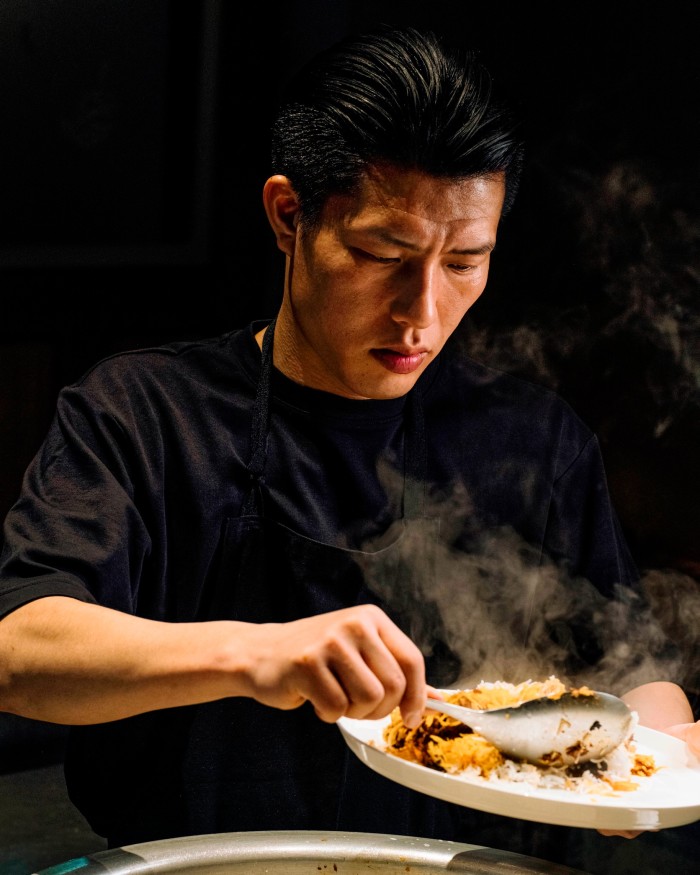
Most Indian restaurants in the capital serve classic brightly coloured, velvety curries such as emerald-green saag paneer (spinach and Indian-style cottage cheese) and marigold-hued butter chicken, all topped off with a swirl of heavy cream. These are almost always paired with cheese naan — chewy, leavened Indian flatbread — sweetened for the Japanese palate and stuffed with molten, stretchy cheese.
Regional Indian cuisine, however, remains elusive in Tokyo. But seek and you shall find. From the southern seaport town of Mangaluru to a bucolic village near the Bay of Bengal, below are five spots in the Japanese capital that will take you through a journey of India.
Spice Lab Tokyo
Gicros GINZA Gems 10F, 6-4-3 Ginza, Chuo, Tokyo 104-0061
-
Good for: Upscale dining, great cocktails
-
Not so good for: Small meals
-
FYI: Prix-fixe menus only: from ¥6,000 ($40/£32) for lunch; from ¥11,000 ($75/£58) for dinner
-
Opening times: Daily, 11.30am–1pm and 5.30pm–8.30pm
This is a unique pan-Indian dining experience — executive chef Tejas Sovani crafts a new menu every quarter, using local seasonal Japanese ingredients for recipes rooted in Indian culinary heritage.
The first dish of every menu serves as a palate cleanser, and is nearly always, in my opinion, Sovani’s masterpiece. On one visit, we were served a lentil vada (doughnut) with mustard kanji (a probiotic drink), chai kombucha and mango chutney. The thrilling invention, while hitting our palates with a myriad of heady flavours, was still light and refreshing.
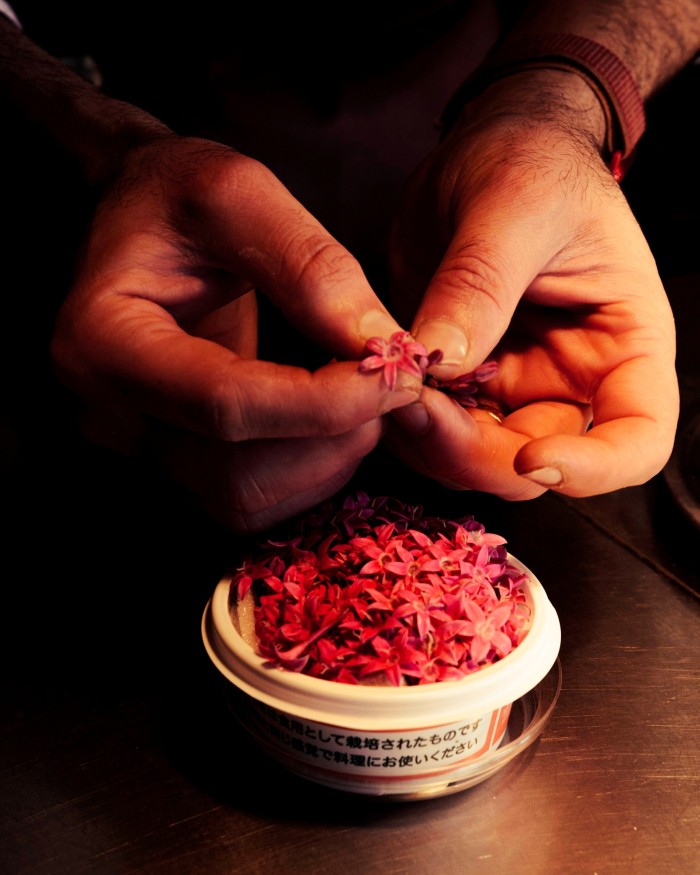
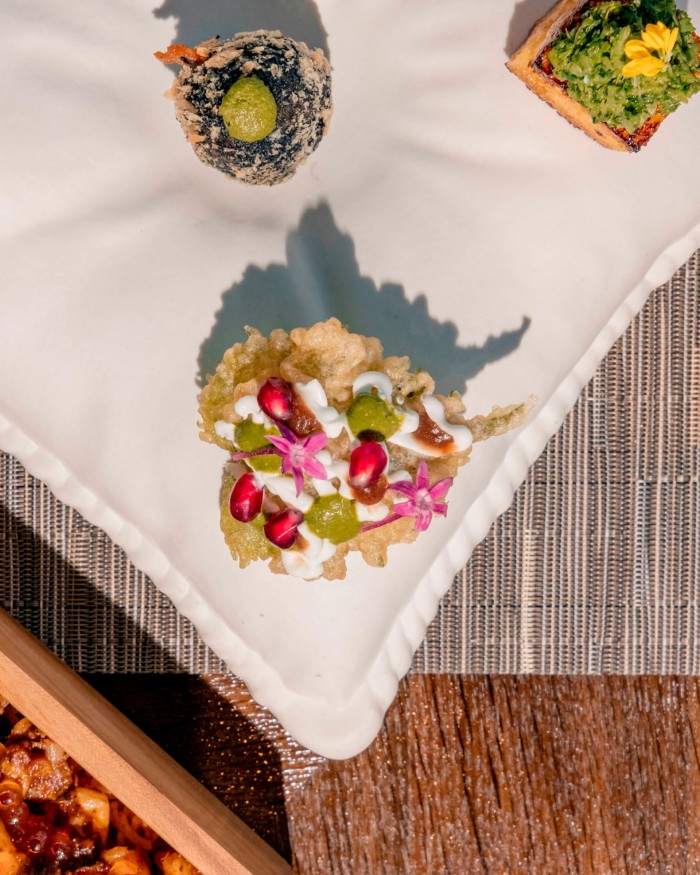
The next course was served on a ceramic cushion with miniature versions of reimagined Indian street food. The shiso-leaf chaat, a battered and fried shiso leaf topped with tangy chutneys and pomegranate, was a standout. Also memorable was the dhokla (steamed chickpea cake) with grilled mashed aubergine.
The main course — vegetarian or meat — depends on the menu you choose. We had a confit duck chettinad, rooted in the fabled cuisine of the Chettinad region in the southern state of Tamil Nadu. Chettiar traders travelled to Sri Lanka and Myanmar in the 19th and 20th centuries, and when they returned, their cooking had taken on influences of the places they had lived. At Spice Lab, the duck was a skilful feat: a combination of potent spices that ended, somehow, in subtlety.
This is followed by a seasonal biryani. One version had edamame, and on another visit the rice was topped with fried shirasu (tiny Japanese fish), instead of the usual caramelised onions. Dessert is always creative and comes with your choice of caffeine.
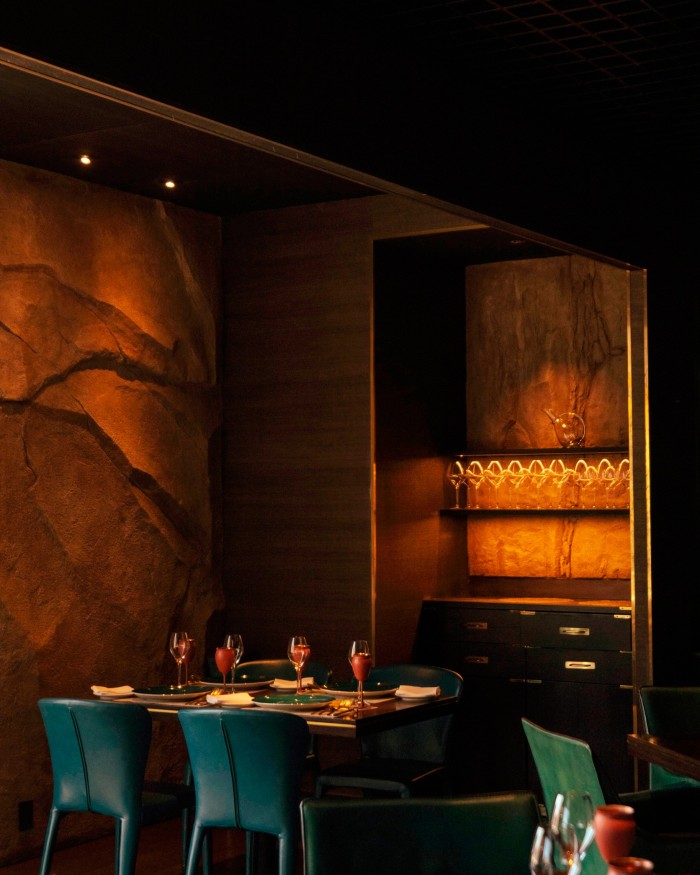
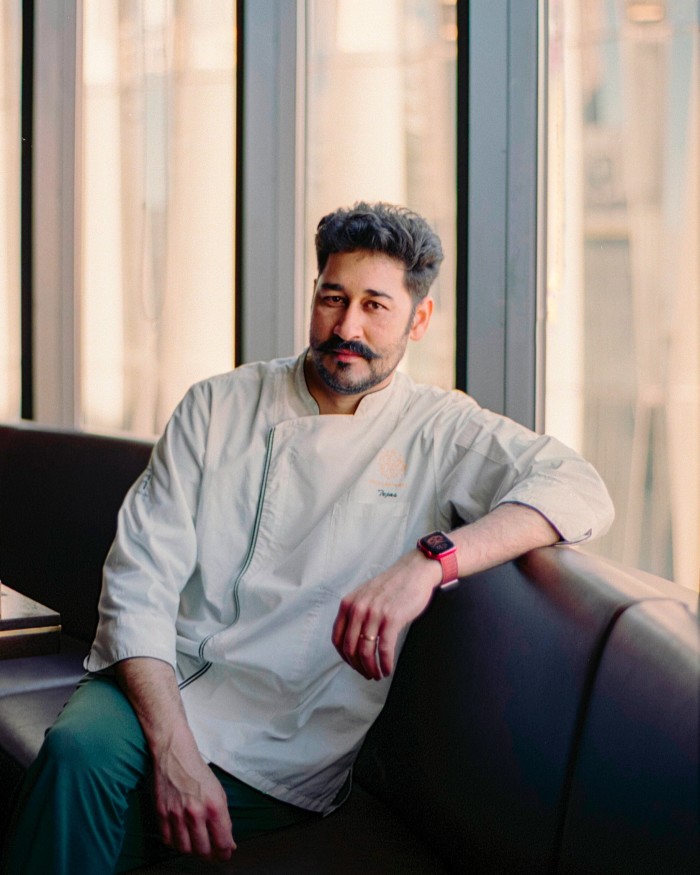
Executive chef Sovani is a great catch for the group that owns the restaurant: he was an award-winning rising star at the Oberoi group of hotels in India. He spent a summer as a stagiaire at Noma in Copenhagen and has also served as executive sous chef at French kaiseki restaurant Naoki at the Aman in New Delhi.
Call ahead for reservations and to notify them of any allergies. After your lunch or before your dinner, indulge in the hustle and bustle of Ginza, one of the most popular shopping districts in Tokyo.
Bangera’s Kitchen Ginza
second floor, ginza inz 2, Nishi 2-2, Chuo, tokyo 104-0061
-
Good for: Mangalorean specialities, serves alcohol
-
Not so good for: Dessert
-
FYI: Two other locations have different menus: a café at Tokyo station serves up snack items and a branch in Nihonbashi is pan-Indian
-
Opening times: Daily, 11am–11pm
A whole grilled fish, secured at the famed Toyosu fish market that morning, arrives at your table still sizzling, stuffed with spiced onions and tomatoes and coated in a sesame-seed crust. It is instantly evocative of the breezy, easy-going coastal town of Mangaluru (previously known as Mangalore).
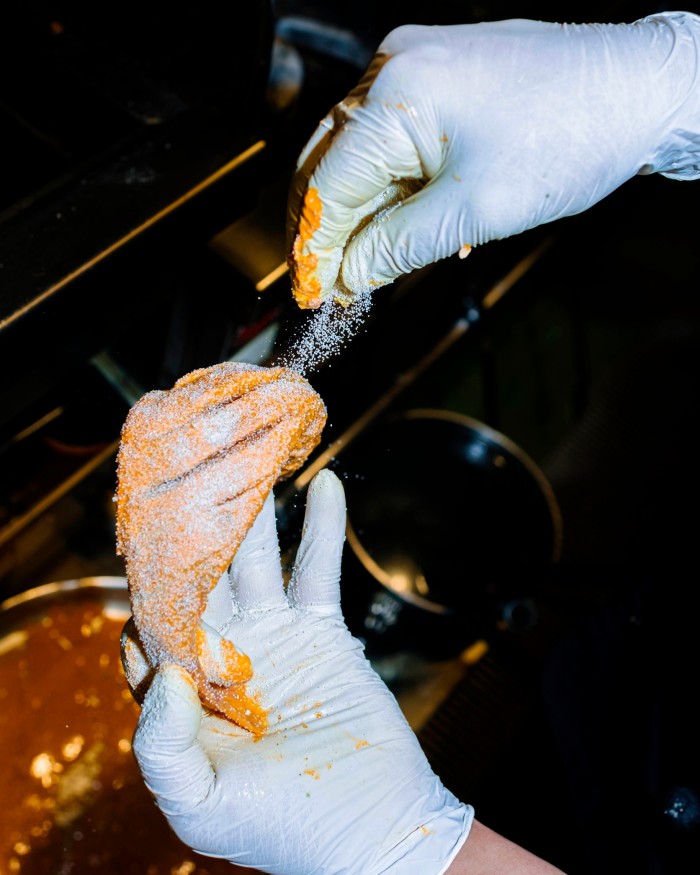
As a bustling commercial port by the Arabian Sea in south-west India, Mangalaru has been home to invaders and traders over the centuries, serving as a key centre for the ancient Spice Route. As well as being on the sea, it has two rivers and an abundance of coconut-bearing palms. Tamarind trees, curry leaves, pepper and ginger grow wild, creating the flavours that Prashant Bangera, of Mangalorean descent, wanted to introduce to Japanese diners when he opened this restaurant in 2018.
Start with the banana buns — delightful little pillows of dough kneaded with just a hint of bananas and cumin, fried and served with a side of coconut chutney tempered with mustard seeds and curry leaf. Bangera adds a generous bowl of sambar, a lentil-based broth with lots of herbs and vegetables. You might raise your eyebrows at pairing bananas with lentils — don’t knock it till you’ve tried it.
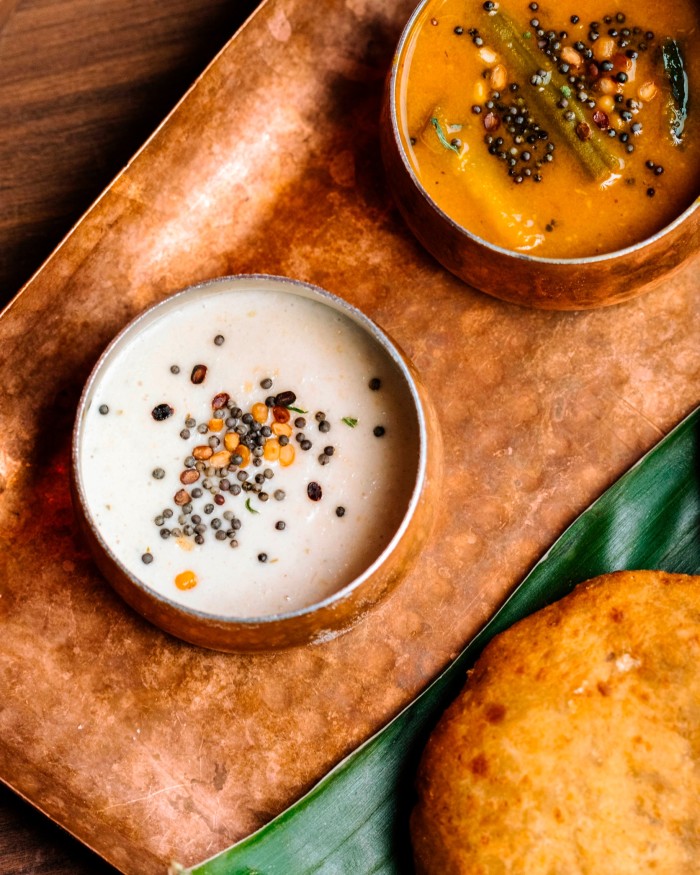
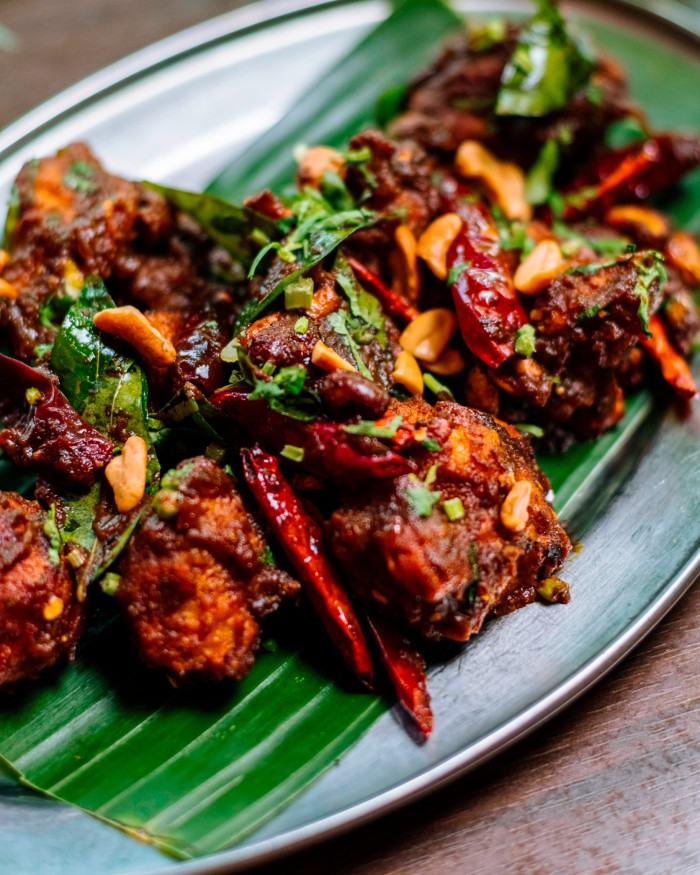
The urval chicken is a must-try: succulent pieces of fried chicken, tossed with generous amounts of curry leaf and cashew nuts. The complex aroma of the curry leaf, at once bitter, sweet and tangy, coats the crispy Japanese chicken, and there is just enough spice to get your juices flowing.
Puja
B1F Lions Plaza Machiya, 3-2-1 Machiya, Arakawa, Tokyo 116-0001
-
Good for: Traditional Bengali food
-
Not so good for: Far from touristy parts of town
-
FYI: Reservations recommended; limited selection of alcohol
-
Opening times: Daily, noon–2pm and 5pm–8pm
Puja’s chef Hiroaki Nagagata, a carpenter from Tokyo, journeyed to West Bengal in his twenties to immerse himself in the folk music of wandering minstrels called Bauls. Captivated by Bengali culture and cuisine, he proposed to Sanchita, a local woman with familial ties to Japanese connections. “Hiro”, who speaks Bengali, opened Puja nearly two decades ago, with Sanchita managing the restaurant.
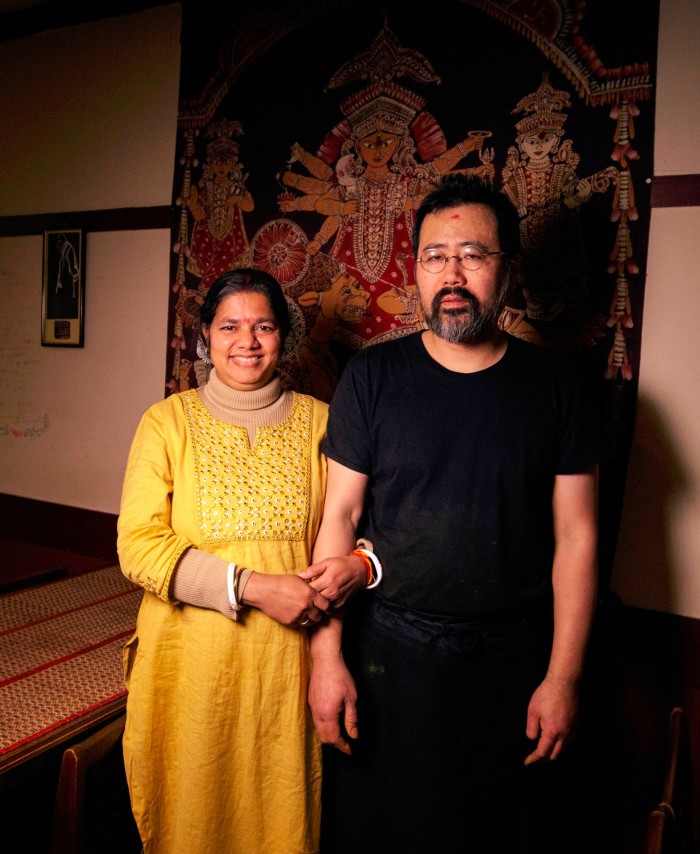
Influenced by a string of ruling empires including the Persians and the British, the cuisine of West Bengal encompasses sub-genres such as Mughlai and Anglo-Indian cuisine, all of which you will find here.
But the daily menu is the quotidian Bengali meal. This starts with bitter and dry, and ends with sweet and moist. Arriving on a round brass platter, thali-style, each dish is given pride of place in a little brass bowl.
Something fried, usually thinly sliced eggplant or potato marinated in salt and turmeric is followed by a dry vegetable dish, and then by shukto, a comforting milky vegetable stew with mustard and poppy-seed paste, where pieces of swimming plantain, green papaya and bitter gourd counter the sweetness of Indian pumpkin. Texture arrives in the form of fried lentil balls soaking in the ghee-lined stew, and the crunchy, tender seed pods of the Moringa tree. That’s followed by a rich chicken curry — or, if you’re lucky, the kosha mangsho, a signature Bengali mutton or goat delicacy.
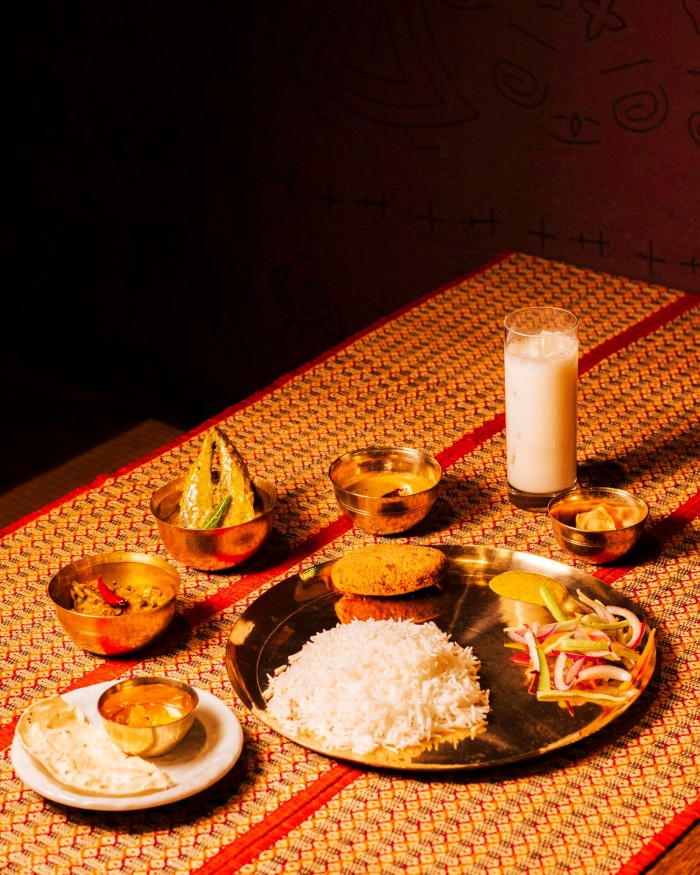
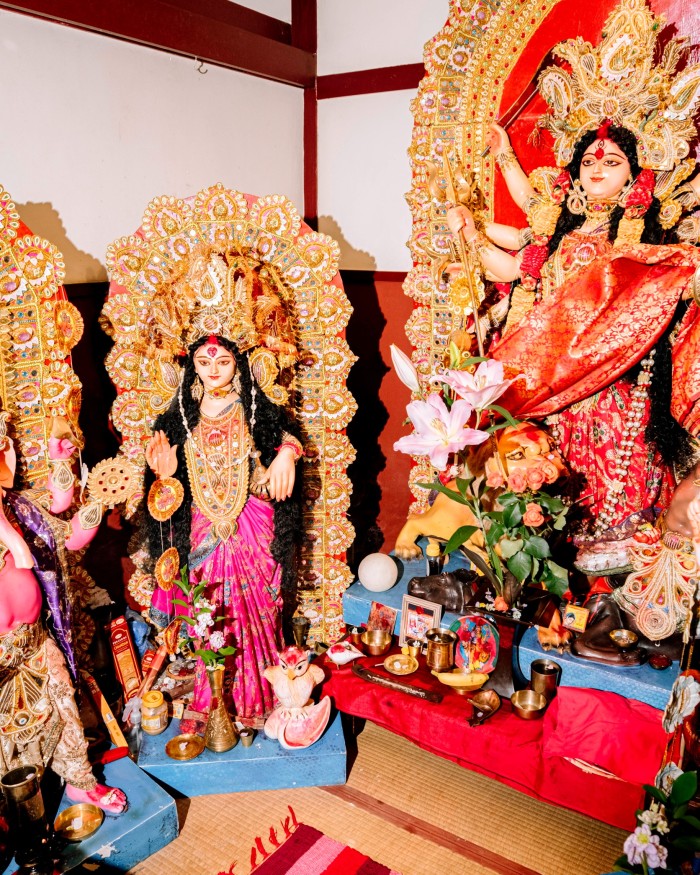
Then a bit of chutney with a base of ginger and nigella seeds — usually a sticky, sweet and sour green mango in the summer, and sweet and savoury tomatoes with raisins in the winter. Almost all of the cooking is done with mustard oil, and meals are capped off with desserts such as traditional Bengali yoghurt.
Puja is a rare treat; Bengali restaurants tend to be absent outside India. Food from neighbouring Bangladesh, which has minimal culinary overlap, is far more common.
Biryani Osawa
B1F Sato Building, Uchikanda 1−15−12, Chiyoda, Tokyo 101-0047
-
Good for: Biryani
-
Not so good for: Serves no other food; the only alcohol is beer
-
FYI: Reservations required a week in advance
-
Opening times: Tuesday, Wednesday, Friday and Saturday, 11.15am–2pm and 6pm–8.30pm
This is a bit of a cult, and it deserves to be.
Biryani Osawa serves only biryanis, paired with Coca-Cola, beer or ginger ale. It is a singular experience and arguably the best biryani in Tokyo. Customers — usually all Japanese — are encouraged to eat with their hands. Alternatively, an enamel spoon is provided to avoid any clashing of flavours.
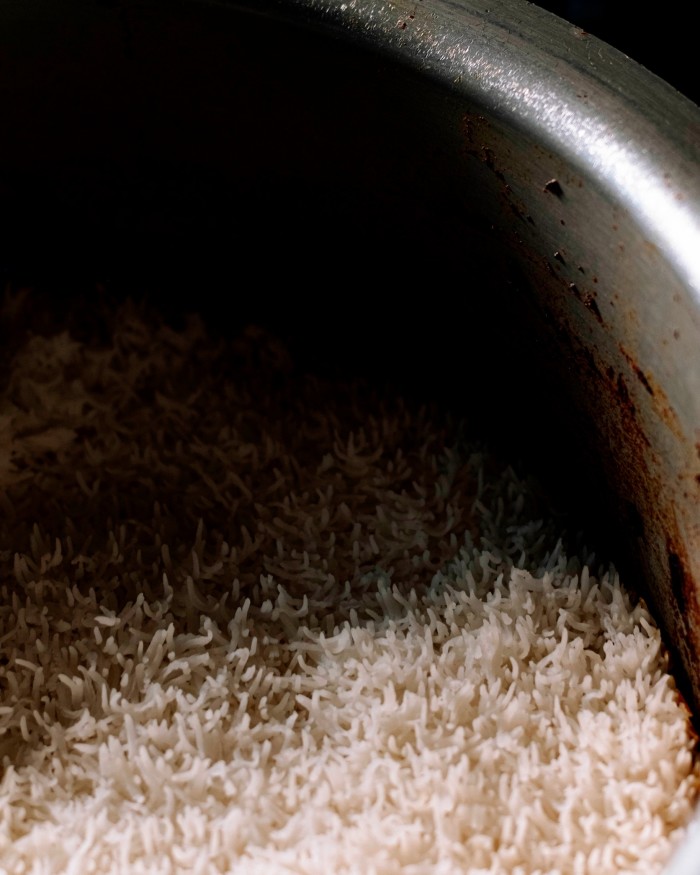
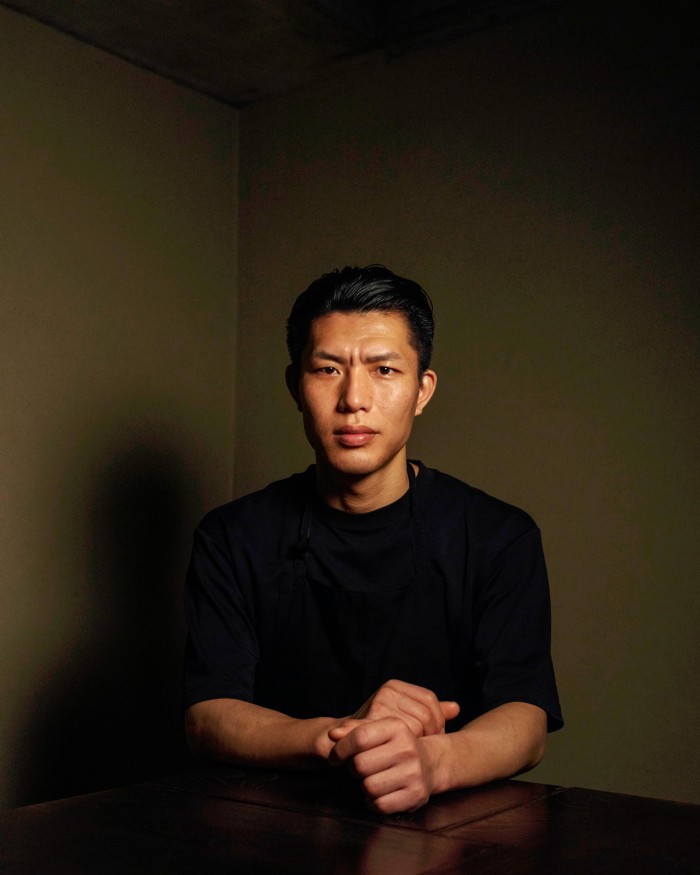
Biryani — a slow-cooked dish of layered long-grain rice, marinated meat and onions — is the stuff of legend in India. The layers are cooked separately and then together. It is a celebration of life, served at weddings, banquets and milestone festivities. Across the country, different “schools” of biryani cook it up with varying signature styles, almost always with saffron, a nod to the dish’s Persian roots.
Takamasa Osawa travelled through India in his twenties, sampling the spectrum of biryanis, which can differ greatly by region. The fluffy, fragrant biryanis at his restaurant are served in two sittings, twice a day. The main ingredient — whether mutton, chicken or something unusual such as oysters — depends on the day. Go on a weekend, and expect lamb. Every now and then, there’s a surprise biryani — oyster, crab, maybe even lobster. Once it was served with badger.
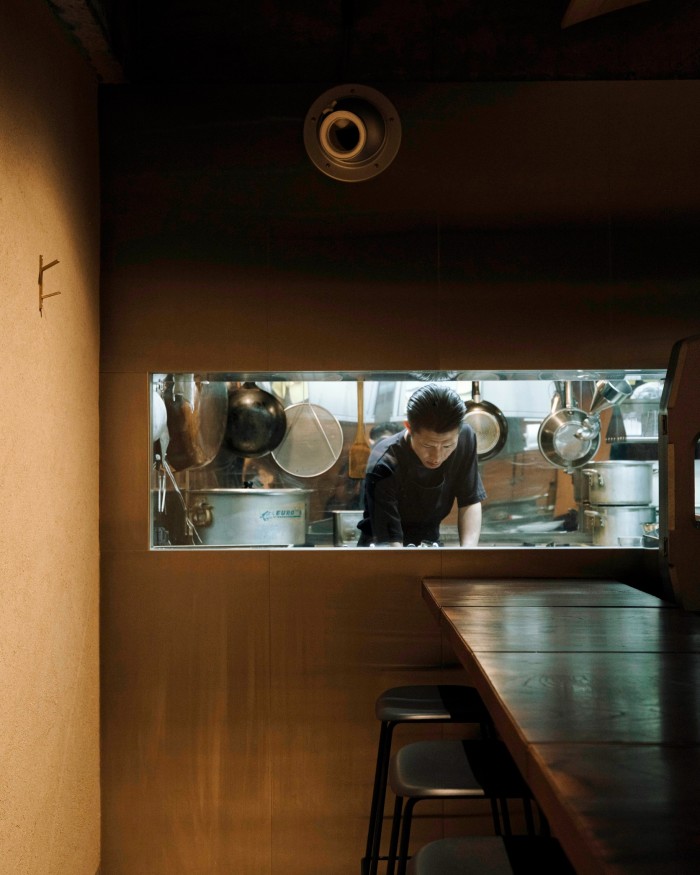
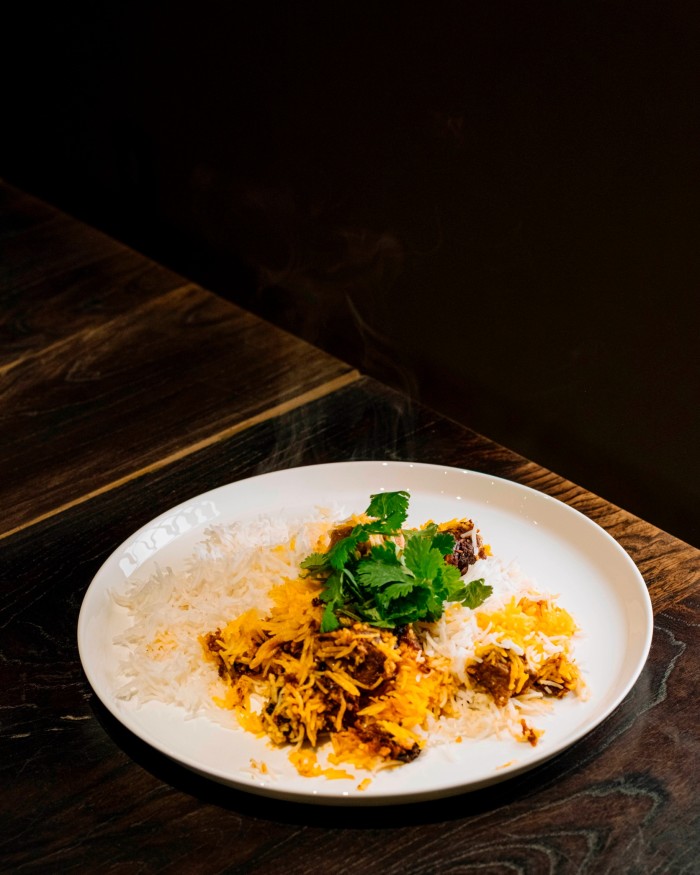
The meat is tender enough to fall off the bone, and the flavour-to-fat ratio is perfect. The rice grains are separate from one another, dodging the globs of dense paste around the meat.
After hosting biryani supper clubs for several years, Osawa raised money through a crowdfunding campaign and opened his doors during the pandemic. Reservations are accepted starting at midnight, seven days prior to your seating. They can be harder to procure than tickets to a Taylor Swift concert, so plan ahead if you’re travelling to Japan. If you live in Tokyo, do this as a gift for your nearest and dearest — it is truly an act of love.
Mumbai
1-2F Horinaka Building, 1−8−6 Yotsuya, Shinjuku, Tokyo 160-0004
-
Good for: Mumbai-style afternoon tea
-
Not so good for: Alcohol isn’t part of the tea but can be ordered separately
-
FYI: Ask for a window seat when making reservations
-
Opening times: Monday–Friday, 11am–11pm; Saturday–Sunday, 11am–10pm
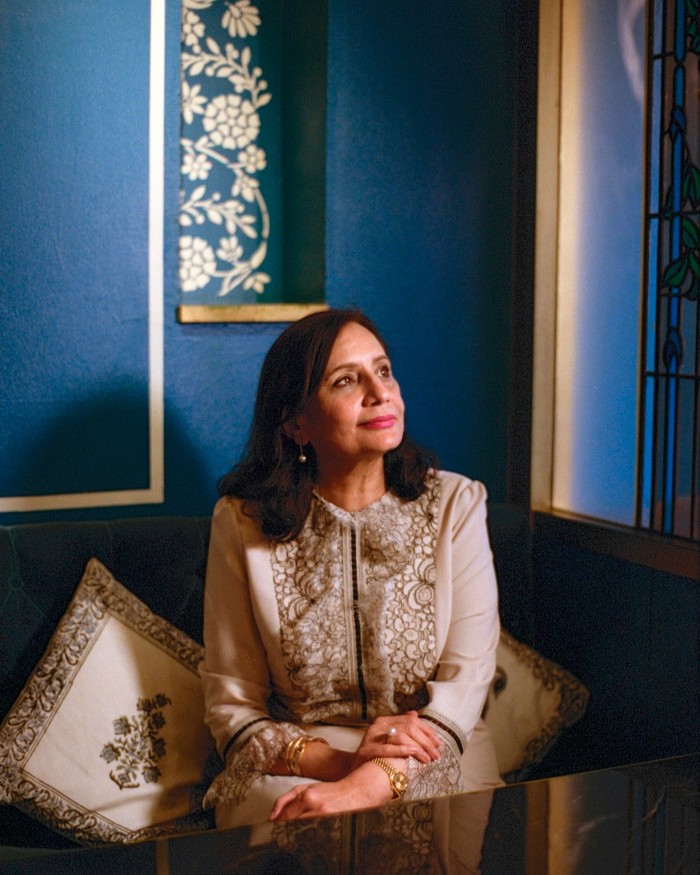
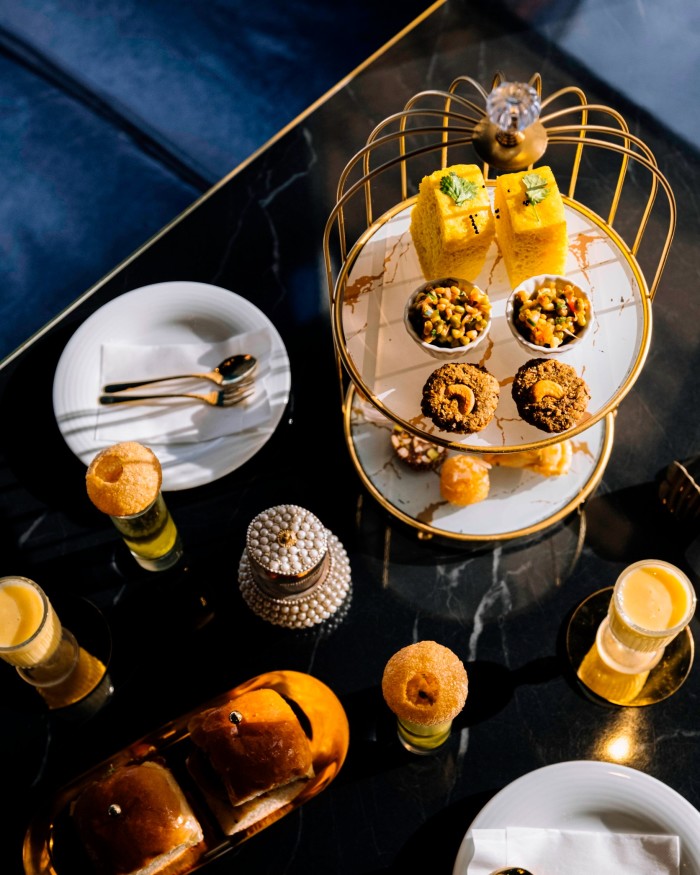
The Indian twist on afternoon tea here is a love letter to the streets of Mumbai. One bite of the vada pav — a potato patty painted with date, tamarind, mint and cilantro chutneys and sandwiched in a bun — is instantly evocative of the food-cart-lined streets and the hustle and bustle of the megalopolis of 21 million dreams.
Owner Popi Kuroda is of Indian heritage but grew up travelling with her diplomat father, arriving in Japan as a teenager. Her chain of Mumbai restaurants is an ode to her ancestral country, where she has never lived.
There are 17 branches of Mumbai in Tokyo, but this is the only one to serve its “Royal Afternoon Tea”. An assortment of street snacks paired with traditional sweets and unlimited masala chai, it is fit for a king. Accordingly, the decor takes inspiration from the palaces of Rajasthan, and the food is served in half-open gilded birdcages.
The tea, a classic masala chai, is served in a “cutting chai” glass, ubiquitous on the streets of Mumbai where vendors pour out piping-hot glasses of chai to the high-octane middle-class Mumbaikars (formerly Bombayites) always hungry for the next thing.
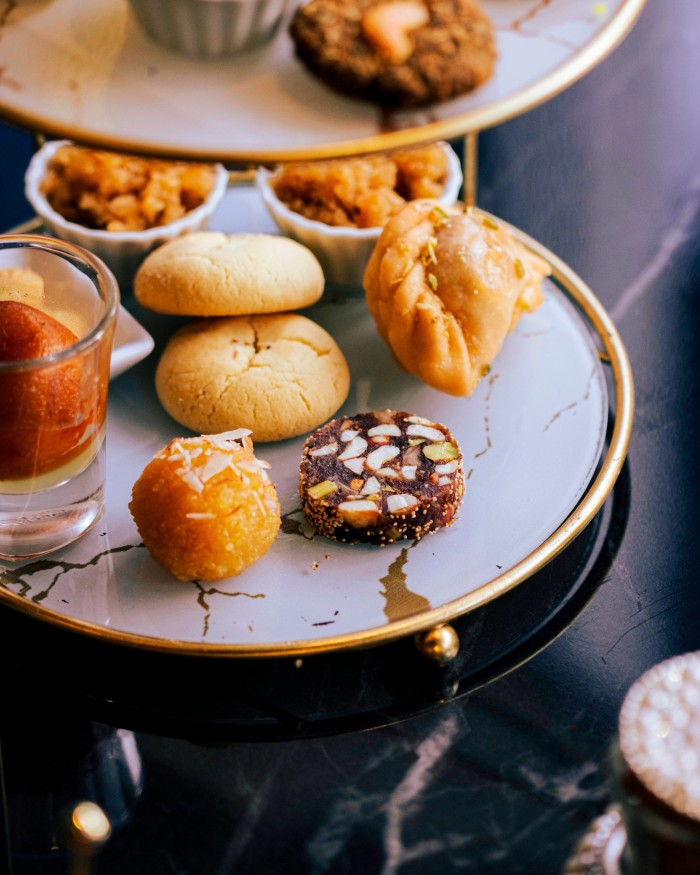
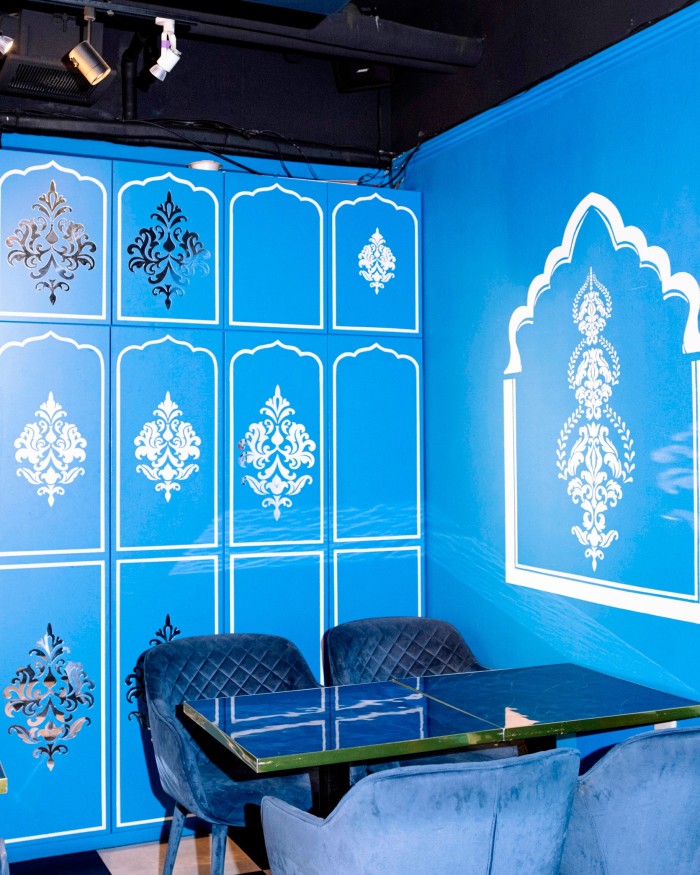
The tea goes perfectly with the spongy dhokla, fermented and steamed savoury chickpea cake served with a lip-smacking chilli chutney. A variety of miniature Indian desserts come with the tea course, and you can spring for two more at no additional cost. Go for the rasmalai, ricotta-like cheese balls in creamy cardamom-seasoned milk.
Make sure you try the à la carte bun maska before you leave the silver filigree-decked walls. An ode to Mumbai’s Parsee community and its slowly fading Irani cafés, the butter-laden bun is designed to be dunked in chai. Take care with the timing of pulling out the bun so you aren’t left with a lump of bread flopping around in your tea.
Get a window seat and watch Tokyoites go about their afternoon as you plan your next trip to Mumbai, where street carts sell sandwiches and chai by gently swaying palm trees against the restless Arabian Sea.
What’s your favourite Indian restaurant in Tokyo? Tell us in the comments below. And follow FT Globetrotter on Instagram at @FTGlobetrotter
Cities with the FT

FT Globetrotter, our insider guides to some of the world’s greatest cities, offers expert advice on eating and drinking, exercise, art and culture — and much more
Find us in Tokyo, New York, Copenhagen, London, Hong Kong, Paris, Rome, Frankfurt, Singapore, Miami, Toronto, Madrid, Melbourne, Zurich, Milan and Vancouver


